Multi-Domain Recognition of Hand-Drawn Diagrams Using Hierarchical Parsing
Abstract
1. Introduction
2. Sketch Recognition Challenges
3. Related Work
3.1. Stroke-Based Sketch Recognition Methods
3.2. Sketch Description Languages
4. Overview of Our Approach
5. Describing Diagrammatic Sketches
5.1. Preliminary Definitions
5.2. Sketch Grammars
- N is a finite non-empty set of non-terminal shape types;
- T is a finite non-empty set of terminal shape types, with ; (it corresponds to the set B introduced in the previous subsection);
- is a finite set of binary spatial and temporal relation identifiers, with and ;
- denotes the starting non-terminal shape type;
- P is a finite non-empty set of productions of the following format:where
- -
- A is a non-terminal shape type,
- -
- is a set of triples {(, , )}, , used to dynamically insert new terminal shape in the input during the parsing process, enhancing the expressive power of the formalism. In particular, is a terminal shape type to be inserted in the input sentence; is a pre-condition to be verified in order to insert ; is the rule used to compute the values of the attributes of from those of .
- -
- ()()…()() is a linear representation with respect to POS where each is a shape type in , each is an optional value, named discriminant value, between 0 and 100 indicating the relevance of shape in the modeled symbol, and each is a sequence with . Each relates attributes of with attributes of , with , by means of a threshold . Notice that we denote (0) simply as . Each may also be a temporal relation, in this case represents the time interval value that relates the two shape types.
- -
- Action specifies the actions that have to be executed when the production is reduced during the parsing process. The actions are enclosed into the brackets { }.



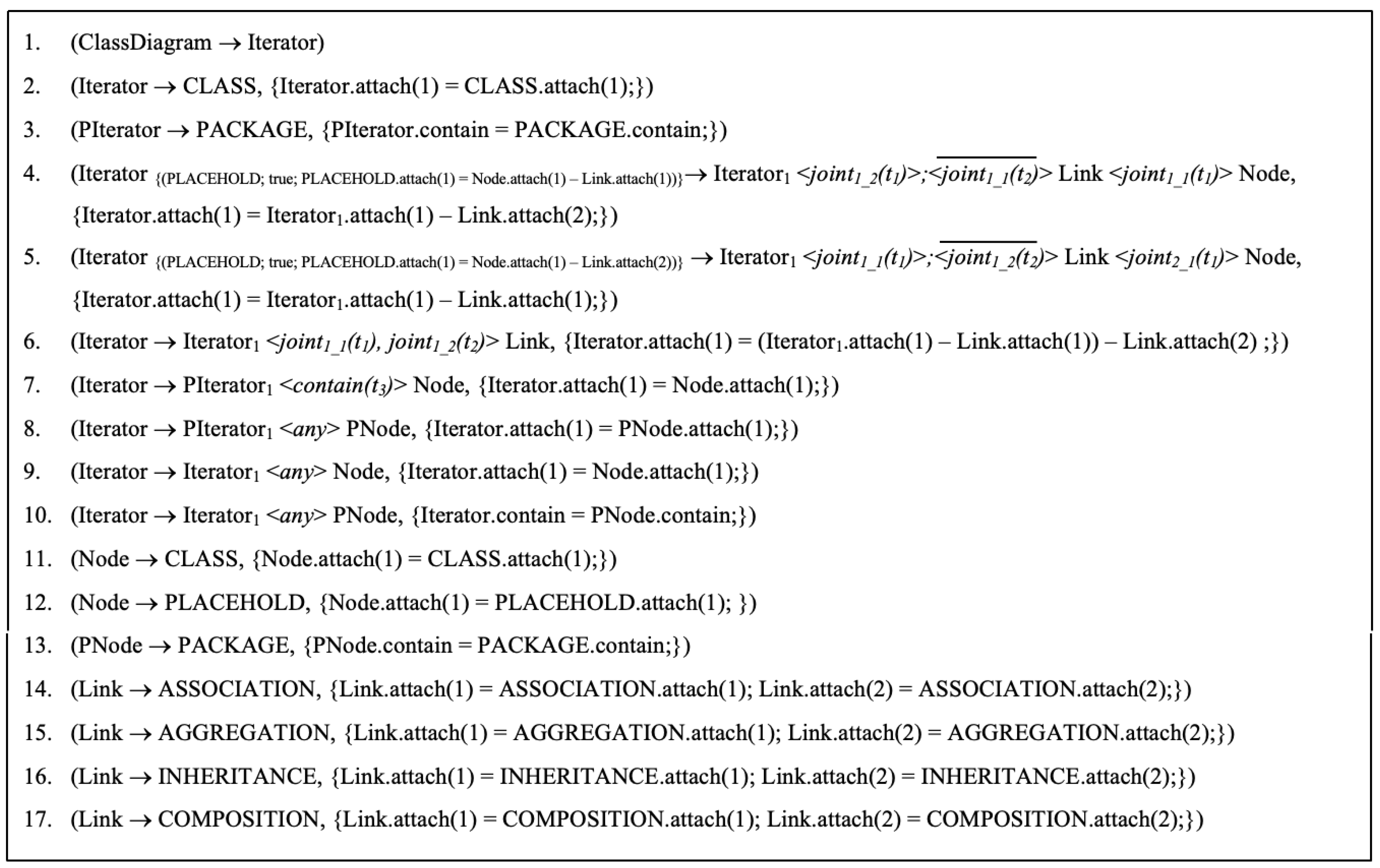
6. The Sketch Recognition System
6.1. The Primitive Shape Recognizer
6.2. The Symbol Recognizer
- the new shapes identified by the primitive shape recognizer, which are saved in the Dictionary;
- a parse tree, which represents the recognized strokes; and,
- an internal stack, which is built on the input analyzed so far.
Improving Recognition Robustness with Error Recovery Techniques
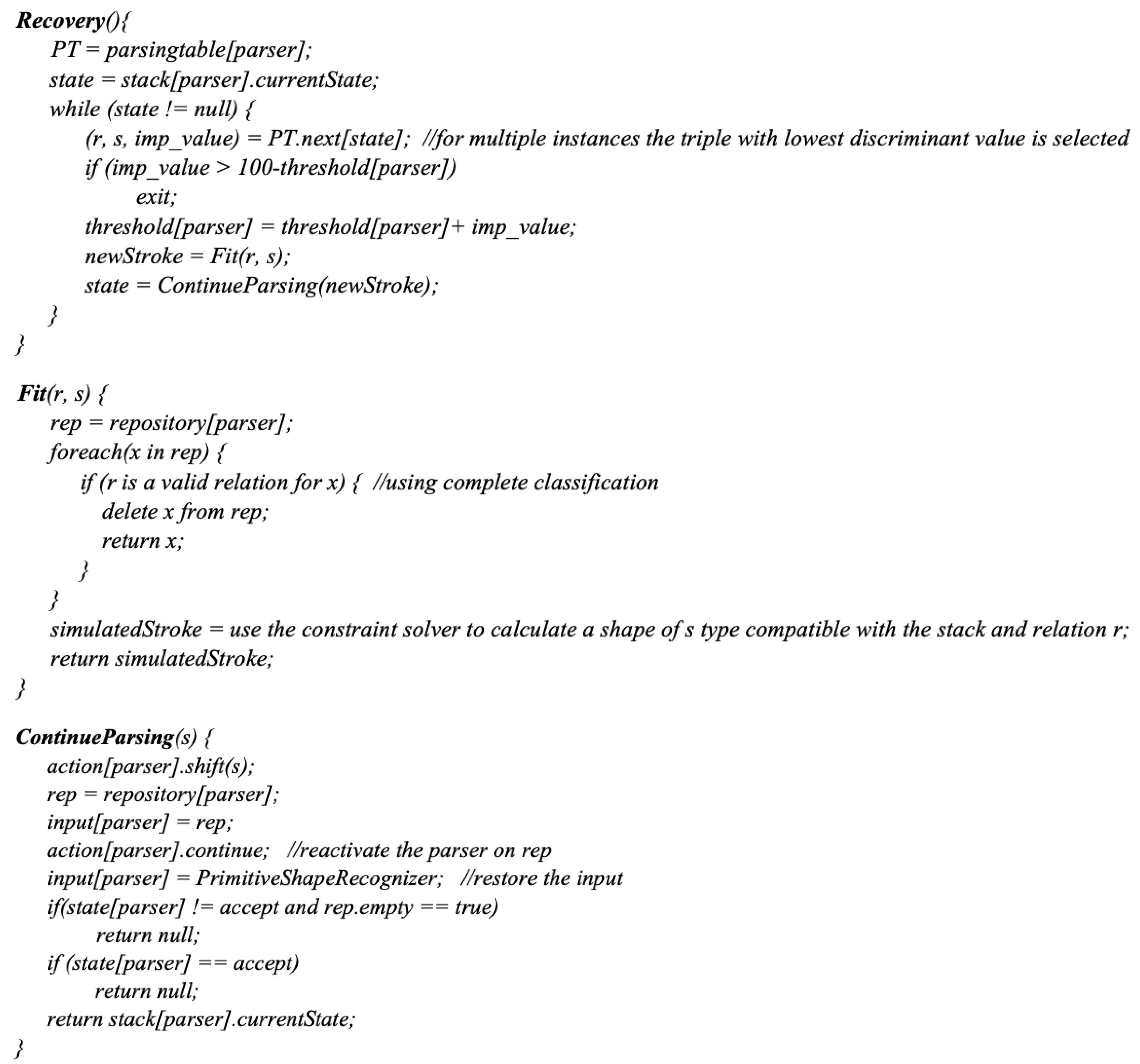
6.3. The Language Recognizer
6.4. Offline Sketch Recognition
7. Recognition Accuracy Evaluation and Usability Study
7.1. Uml Class Diagram Recognition Study
7.1.1. Experiment Setup
7.1.2. Results and Discussion
7.2. Sketchbench Usability Study
7.2.1. Experiment Setup
7.2.2. Results and Discussion
8. Conclusions and Future Work
Author Contributions
Funding
Conflicts of Interest
Abbreviations
| SkGs | Sketch Grammars |
| SCFG | stochastic context-free grammars |
| UML | Unified Modeling Language |
| HMM | Hidden Markov Model |
Appendix A. The Parsing Program Algorithm

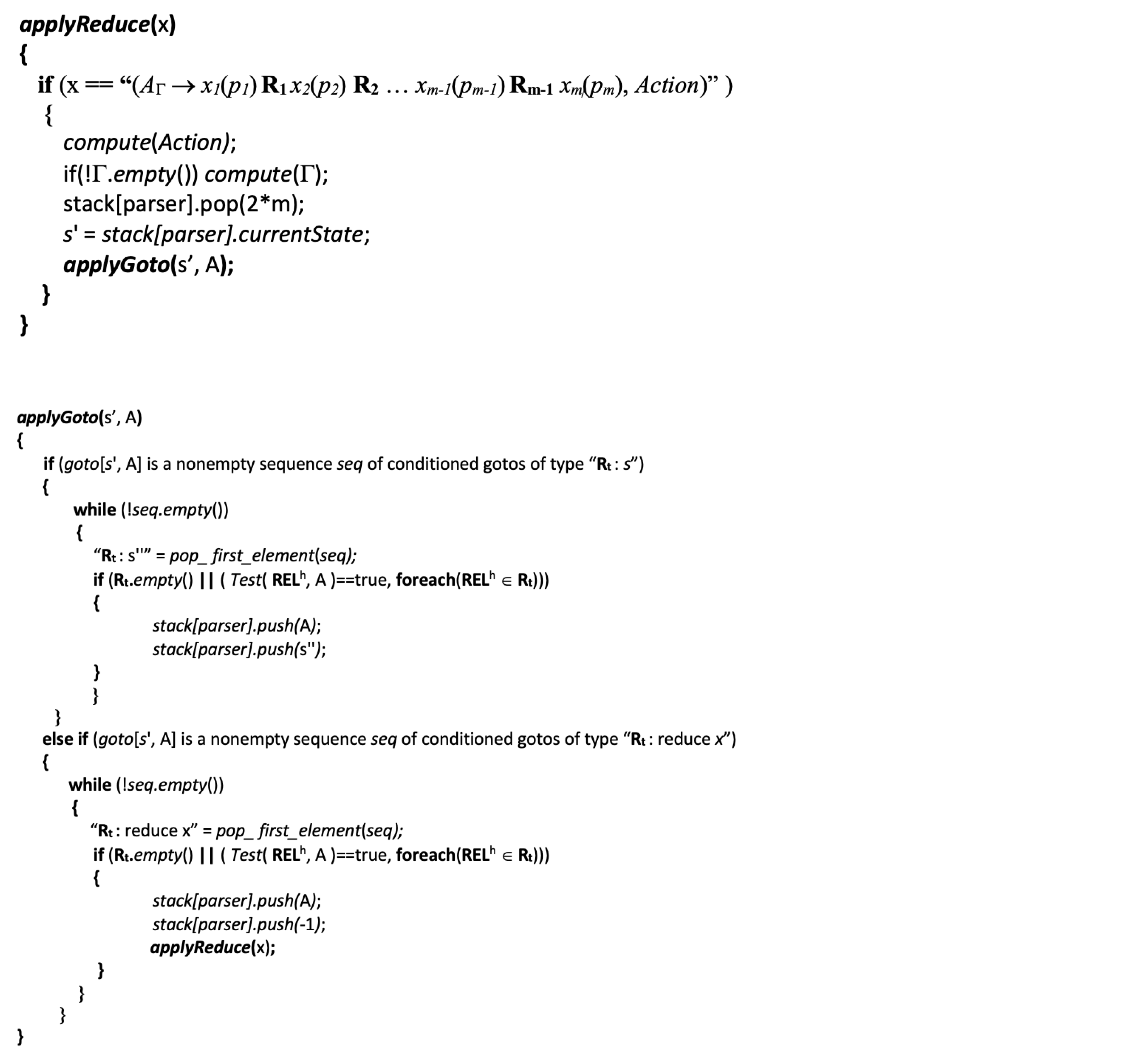
Appendix B
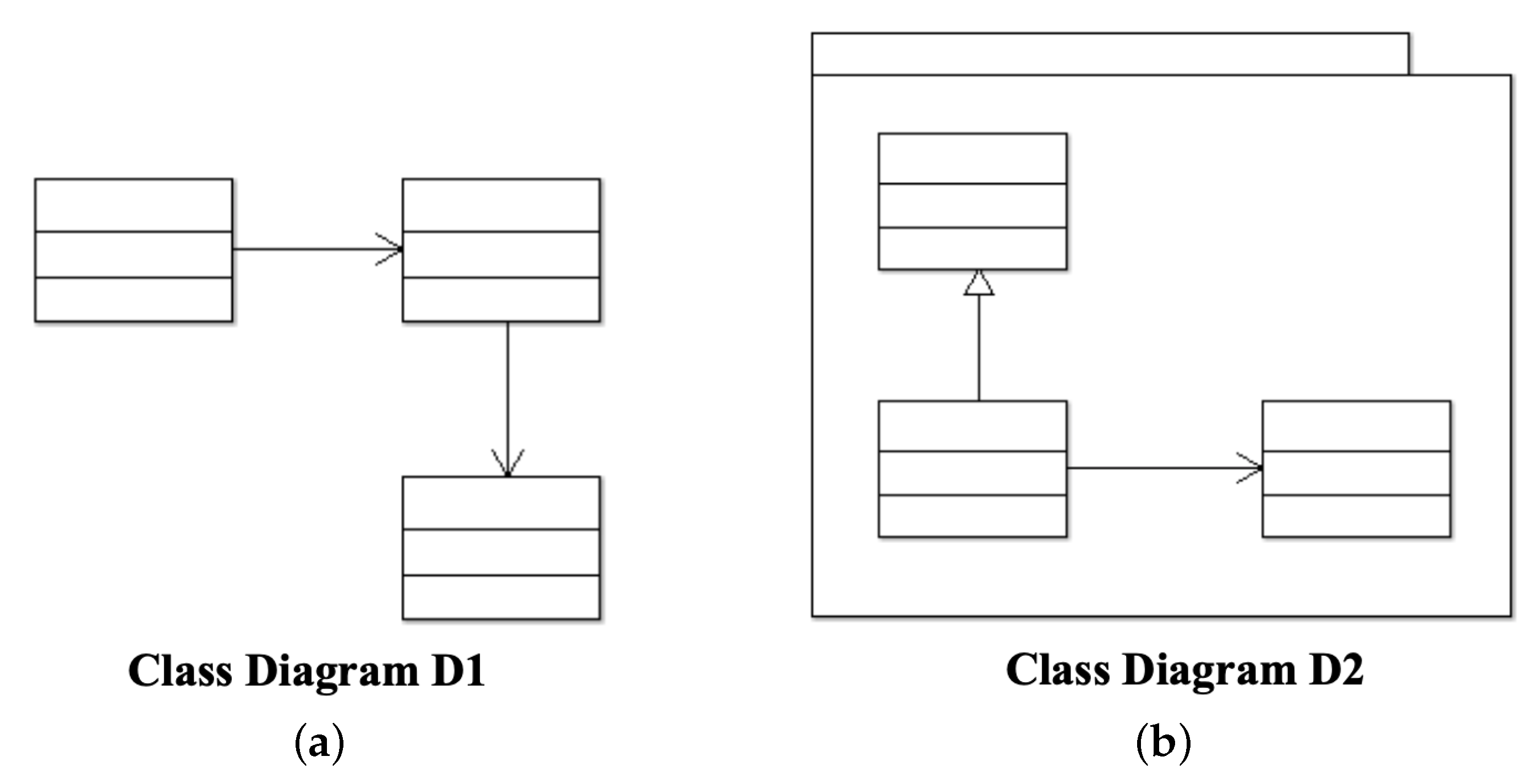
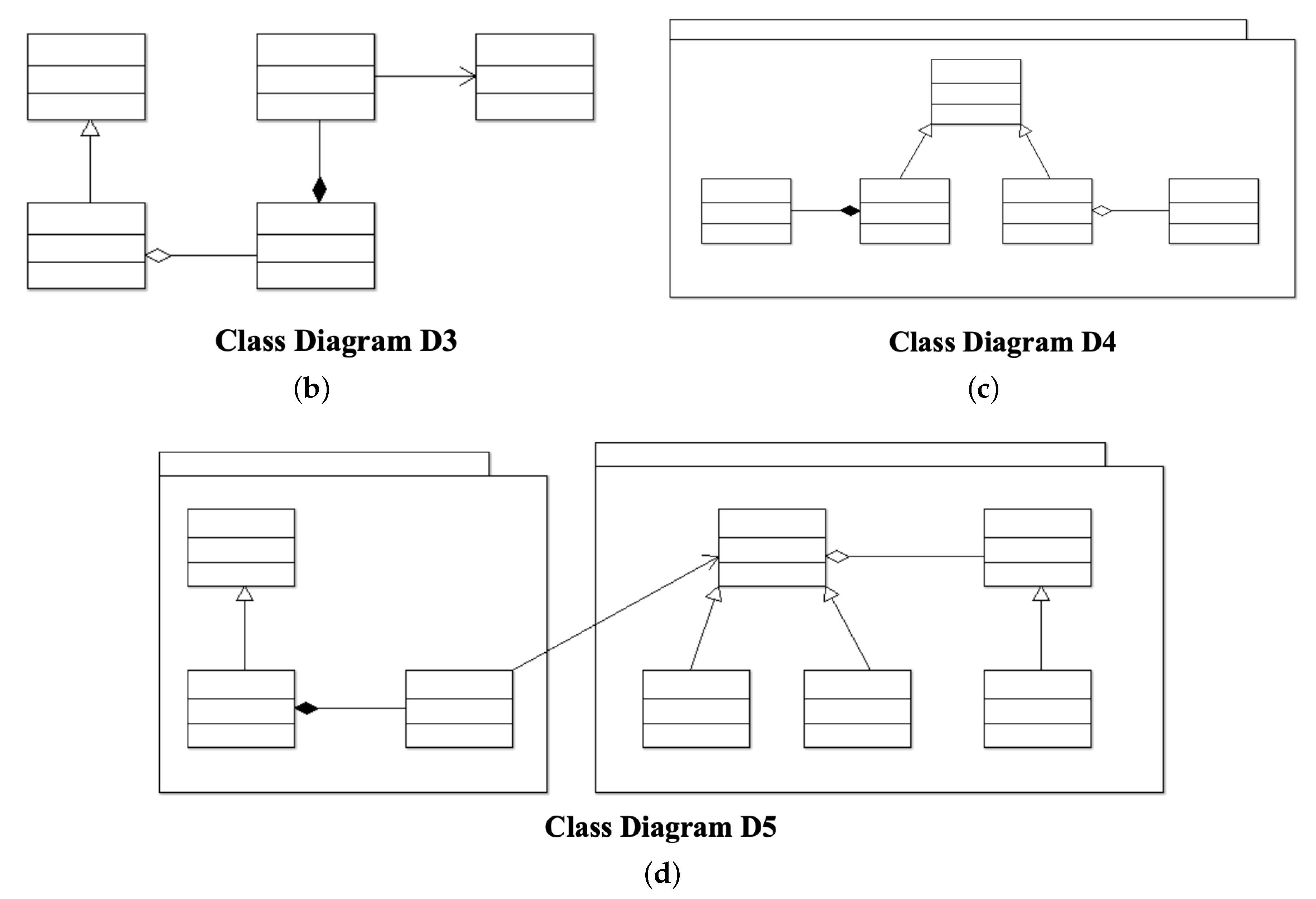
References
- Davis, R. Magic Paper: Sketch-Understanding Research. IEEE Comput. 2007, 40, 34–41. [Google Scholar] [CrossRef]
- Igarashi, T.; Zeleznik, B. Sketch-based Interaction. IEEE Comput. Graph. Appl. 2007, 27, 26–27. [Google Scholar] [CrossRef] [PubMed]
- Stahovich, T.; Davis, R.; Shrobe, H. Generating Multiple New Designs from a Sketch. Artif. Intell. 1998, 104, 211–264. [Google Scholar] [CrossRef]
- Ghorbel, A.; Lemaitre, A.; Anquetil, E.; Fleury, S.; Jamet, E. Interactive interpretation of structured documents: Application to the recognition of handwritten architectural plans. Pattern Recognit. 2015, 48, 2446–2458. [Google Scholar] [CrossRef]
- Atilola, O.; Valentine, S.; Kim, H.H.; Turner, D.; McTigue, E.; Hammond, T.; Linsey, J. Mechanix: A natural sketch interface tool for teaching truss analysis and free-body diagrams. Artif. Intell. Eng. Des. Anal. Manuf. 2014, 28, 169–192. [Google Scholar] [CrossRef]
- Goel, V. Sketches of Thought; The MIT Press: Cambridge, MA, USA, 1995. [Google Scholar]
- Hearst, M. Sketching Intelligent Systems. IEEE Intell. Syst. Their Appl. 1998, 13, 10–19. [Google Scholar] [CrossRef]
- Igarashi, T.; Matsuoka, S.; Kawachiya, S.; Tanaka, H. Interactive Beautification: A Technique for Rapid Geometric Design. In Proceedings of UIST’97; ACM Press: New York, NY, USA, 1997; pp. 105–114. [Google Scholar]
- Cheema, S.; LaViola, J.J. Applying Mathematical Sketching to Sketch-Based Physics Tutoring Software. In Smart Graphics; Taylor, R., Boulanger, P., Krüger, A., Olivier, P., Eds.; Springer: Berlin/Heidelberg, Germany, 2010; pp. 13–24. [Google Scholar]
- Fišer, J.; Asente, P.; Schiller, S.; Sýkora, D. Advanced drawing beautification with ShipShape. Comput. Graph. 2016, 56, 46–58. [Google Scholar] [CrossRef]
- Rubine, D. Specifying Gestures by Example. Comput. Graph. 1991, 25, 329–337. [Google Scholar] [CrossRef]
- Damm, C.; Hansen, K.; Thomsen, M. Tool Support for Cooperative Object-oriented Design: Gesture based Modeling on an Electronic Whiteboard. Chi Lett. 2000, 2, 518–525. [Google Scholar]
- Li, L.; Fu, H.; Tai, C. Fast sketch segmentation and labeling with deep learning. IEEE Comput. Graph. Appl. 2019, 39, 38–51. [Google Scholar] [CrossRef]
- Schneider, R.G.; Tuytelaars, T. Example-Based Sketch Segmentation and Labeling Using CRFs. ACM Trans. Graph. 2016, 35. [Google Scholar] [CrossRef]
- Lank, E.; Thorley, J.; Chen, S. An Interactive System for Recognizing Hand Drawn UML Diagrams. In Proceedings of the Conference of the Centre for Advanced Studies on Collaborative Research (CASCON’00), Mississauga, ON, Canada, 13–16 November 2000; pp. 1–15. [Google Scholar]
- Sezgin, T. Online Sketch Recognition from a Dynamic Perspective. Ph.D. Dissertation, Department Electrical Engineering and Computer Science, Massachusetts Institute of Technology, Cambridge, MA, USA, 2006. [Google Scholar]
- Wenyin, L.; Qian, W.; Xiao, R.; Jin, X. Smart Sketchpad—An On-line Graphics Recognition System. In Proceedings of the International Conference on Document Analysis and Recognition (ICDAR’01), Seattle, WA, USA, 13 September 2001; IEEE CS Press: Los Alamitos, CA, USA, 2001; pp. 1050–1054. [Google Scholar]
- Costagliola, G.; Deufemia, V.; Risi, M. Sketch Grammars: A Formalism for Describing and Recognizing Diagrammatic Sketch Languages. In Proceedings of the International Conference on Document Analysis and Recognition (ICDAR’05), Seoul, Korea, 31 August–1 September 2005; IEEE CS Press: Los Alamitos, CA, USA, 2005. [Google Scholar]
- Costagliola, G.; Deufemia, V.; Risi, M. A Multi-layer Parsing Strategy for On-line Recognition of Hand-drawn Diagrams. In Proceedings of the IEEE Symposium on Visual Languages and Human-Centric Computing (VL/HCC’06), Brighton, UK, 4–8 September 2006; IEEE CS Press: Los Alamitos, CA, USA, 2006; pp. 103–110. [Google Scholar]
- Aho, A.; Sethi, R.; Ullman, J. Compilers Principles, Techniques, and Tools; Addison-Wesley Longman Publishing Co., Inc.: Boston, MA, USA, 1987. [Google Scholar]
- Snelting, G. How to Build LR Parsers which Accept Incomplete Input. Sigplan Not. 1990, 25, 51–58. [Google Scholar] [CrossRef]
- Kara, L.; Stahovich, T. Hierarchical Parsing and Recognition of Hand-sketched Diagrams. In Proceedings of UIST’04; ACM Press: New York, NY, USA, 2004; pp. 13–22. [Google Scholar]
- McFadzean, J.; Cross, N.G.; Johnson, J.H. An Analysis of Architectural Visual Reasoning in Conceptual Sketching Via Computational Sketch Analysis (CSA). In Proceedings of the IEEE International Conference on Information Visualization, London, UK, 14–16 July 1999; pp. 258–265. [Google Scholar]
- Apte, A.; Vo, V.; Kimura, T.D. Recognizing Multistroke Geometric Shapes: An Experimental Evaluation. In Proceedings of UIST’93; ACM Press: New York, NY, USA, 1993; pp. 121–128. [Google Scholar]
- Fonseca, M.; Pimentel, C.; Jorge, J. CALI—An Online Scribble Recognizer for Calligraphic Interfaces. In AAAI Spring Symposium on Sketch Understanding; AAAI Press: Cambridge, MA, USA, 2002; pp. 51–58. [Google Scholar]
- Sun, Z.; Jiang, E.; J., S. Adaptive Online Multi-Stroke Sketch Recognition based on Hidden Markov Model. Adv. Mach. Learn. Cybern. 2006, 3930, 948–957. [Google Scholar]
- Kara, L.; Stahovich, T. An Image-based, Trainable Symbol Recognizer for Hand-drawn Sketches. Comput. Graph. 2005, 29, 501–517. [Google Scholar] [CrossRef]
- Hu, R.; James, S.; Wang, T.; Collomosse, J. Markov random fields for sketch based video retrieval. In Proceedings of ACM Conference on International Conference on Multimedia Retrieval; ACM Press: New York, NY, USA, 2013; pp. 279–286. [Google Scholar]
- Schneider, R.G.; Tuytelaars, T. Sketch Classification and Classification-Driven Analysis Using Fisher Vectors. ACM Trans. Graph. 2014, 33, 1–9. [Google Scholar] [CrossRef]
- Deufemia, V.; Risi, M.; Tortora, G. Sketched symbol recognition using Latent-Dynamic Conditional Random Fields and distance-based clustering. Pattern Recognit. 2014, 47, 1159–1171. [Google Scholar] [CrossRef]
- Seddati, O.; Dupont, S.; Mahmoudi, S. DeepSketch: Deep convolutional neural networks for sketch recognition and similarity search. In Proceedings of the 2015 13th International Workshop on Content-Based Multimedia Indexing (CBMI), Prague, Czech Republic, 10–12 June 2015; IEEE CS Press: Los Alamitos, CA, USA, 2015; pp. 1–6. [Google Scholar]
- Zhang, H.; Liu, S.; Zhang, C.; Ren, W.; Wang, R.; Cao, X. SketchNet: Sketch classification with web images. In Proceedings of the IEEE Conference on Computer Vision and Pattern Recognition; IEEE CS Press: Los Alamitos, CA, USA, 2016; pp. 1105–1113. [Google Scholar]
- Zhang, X.; Huang, Y.; Zou, Q.; Pei, Y.; Zhang, R.; Wang, S. A Hybrid convolutional neural network for sketch recognition. Pattern Recognit. Lett. 2020, 130, 73–82. [Google Scholar] [CrossRef]
- Saund, E.; J., M.; Fleet, D.; Larner, D.; Lank, E. Perceptual Organization as a Foundation for intelligent Sketch Editing. In Proceedings of AAAI Spring Symposium on Sketch Understanding; AAAI Press: Cambridge, MA, USA, 2002; pp. 118–125. [Google Scholar]
- Lank, E.; Saund, E. Sloppy Selection: Providing an Accurate Interpretation of Imprecise Stylus Selection Gestures. Comput. Graph. 2005, 29, 490–500. [Google Scholar] [CrossRef][Green Version]
- Perteneder, F.; Bresler, M.; Grossauer, E.M.; Leong, J.; Haller, M. CLuster: Smart Clustering of Free-Hand Sketches on Large Interactive Surfaces. In Proceedings of the 28th Annual ACM Symposium on User Interface Software & Technology, ACM, UIST’15, Charlotte, NC, USA, 8–11 November 2015; pp. 37–46. [Google Scholar]
- Sezgin, T.; Davis, R. Sketch Interpretation Using Multiscale Models of Temporal Patterns. IEEE Comput. Graph. Appl. 2007, 27, 28–37. [Google Scholar] [CrossRef]
- Hall, A.; Pomm, C.; Widmayer, P. A Combinatorial Approach to Multi-Domain Sketch Recognition. In Proceedings of the Eurographics Workshop on Sketch-Based Interfaces and Modeling (SBIM’07), Riverside, CA, USA, 2–4 August 2007. [Google Scholar]
- Bresler, M.; Průs̆a, D.; Hlavác̆. Online recognition of sketched arrow-connected diagrams. Int. J. Doc. Anal. Recognit. 2016, 19, 253–267. [Google Scholar] [CrossRef]
- Alvarado, C.; Davis, R. Dynamically Constructed Bayes Nets for Multi-Domain Sketch Understanding. In Proceedings of the IJCAI’05, Edinburgh, UK, 30 July–5 August 2005; pp. 1407–1412. [Google Scholar]
- Hammond, T.; Davis, R. LADDER—A Sketching Language for User Interface Developers. Comput. Graph. 2005, 29, 518–532. [Google Scholar] [CrossRef]
- Stiny, G.; Gips, J. Shape Grammars and the Generative Specification of Painting and Sculpture. Inf. Process. 1972, 71, 1460–1465. [Google Scholar]
- Mahoney, J.; Fromherz, M. Three Main Concerns in Sketch Recognition and an Approach to Addressing Them. In Proceedings of AAAI Spring Symposium on Sketch Understanding; AAAI Press: Cambridge, MA, USA, 2002; pp. 105–112. [Google Scholar]
- Pasternak, B. Processing Imprecise and Structural Distorted Line Drawings by an Adaptable Drawing Interpretation Kernel. In Proceedings of the IAPR Workshop on Document Analysis Systems (DAS’94), Kaiserslautern, Germany, 18–20 October 1994; pp. 349–363. [Google Scholar]
- Landay, J. Interactive Sketching for the Early Stages of User Interface Design. Ph.D. Dissertation, Carnegie Mellon University, Pittsburgh, PA, USA, 1996. [Google Scholar]
- Shizuki, B.; Yamada, H.; Iizuka, K.; Tanala, J. A Unified Approach for Interpreting Handwritten Strokes. In Proceedings of the IEEE Symposium on Human-Centric Computing, Auckland, New Zealand, 31 October 2003; IEEE CS Press: Los Alamitos, CA, USA, 2003; pp. 180–182. [Google Scholar]
- Shilman, M.; Pasula, H.; Russell, S.; Newton, R. Statistical Visual Language Models for Ink Parsing. In Proceedings of AAAI Spring Symposium on Sketch Understanding; AAAI Press: Cambridge, MA, USA, 2002; pp. 126–132. [Google Scholar]
- Álvaro, F.; Sánchez, J.A.; Benedí, J.M. Recognition of on-line handwritten mathematical expressions using 2D stochastic context-free grammars and hidden Markov models. Pattern Recognit. Lett. 2014, 35, 58–67. [Google Scholar] [CrossRef]
- Macé, S.; Anquetil, E. Eager interpretation of on-line hand-drawn structured documents: The DALI methodology. Pattern Recognit. 2009, 42, 3202–3214. [Google Scholar] [CrossRef]
- Krichen, O.; Girard, N.; Anquetil, É.; Corbille, S.; Renault, M. Real-Time Interpretation of Hand-Drawn Sketches with Extended Hierarchical bi-Dimensional Grammar. In Proceedings of the 16th International Conference on Frontiers in Handwriting Recognition, IEEE Computer Society, ICFHR 2018, Niagara Falls, NY, USA, 5–8 August 2018; pp. 273–278. [Google Scholar]
- Object Management Group. UML Specification Version 2.5.1. Technical Report. Available online: https://www.omg.org/spec/UML (accessed on 14 August 2020).
- Duda, R.; Hart, P. Pattern Classification and Scene Analysis; Wiley Press: New York, NY, USA, 1973. [Google Scholar]
- Hse, H.; Shilman, M.; Newton, A. Robust Sketched Symbol Fragmentation using Templates. In Proceedings of IUI ’04; ACM Press: New York, NY, USA, 2004; pp. 156–160. [Google Scholar]
- Zhang, X.; Song, J.; Dai, G.; Lyu, M. Extraction of Line Segments and Circular Arcs from Freehand Strokes based on Segmental Homogeneity Features. IEEE Trans. Syst. Man Cybern. 2006, 36, 300–311. [Google Scholar] [CrossRef]
- Yin, L.; Yajie, Y.; Weyin, L. Online Segmentation of Freehand Stroke by Dynamic Programming. In Proceedings of the International Conference on Document Analysis and Recognition (ICDAR’05), Seoul, Korea, 31 August–1 September 2005; IEEE CS Press: Los Alamitos, CA, USA, 2005; pp. 197–201. [Google Scholar]
- Weisstein, E.; Least Squares Fitting–Perpendicular Offsets. Technical Report. Available online: http://mathworld.wolfram.com/LeastSquaresFittingPerpendicularOffsets.html (accessed on 14 August 2020).
- Fitzgibbon, A.; Pilu, M.; Fisher, R. Direct Least Square Fitting of Ellipses. IEEE Trans. Pattern Anal. Mach. Intell. 1999, 21, 476–480. [Google Scholar] [CrossRef]
- Costagliola, G.; Deufemia, V.; Polese, G.; Risi, M. A Parsing Technique for Sketch Recognition Systems. In Proceedings of the IEEE Symposium VL/HCC’04, Rome, Italy, 26–29 September 2004; pp. 19–26. [Google Scholar]
- Costagliola, G.; Deufemia, V.; Polese, G.; Risi, M. Building Syntax-Aware Editors for Visual Languages. J. Vis. Lang. Comput. 2005, 16, 508–540. [Google Scholar] [CrossRef]
- Costagliola, G.; Deufemia, V.; Polese, G. A Framework for Modeling and Implementing Visual Notations with Applications to Software Engineering. Acm Trans. Softw. Eng. Methodol. 2004, 13, 431–487. [Google Scholar] [CrossRef]
- Costagliola, G.; Deufemia, V.; Risi, M. Using Error Recovery Techniques to Improve Sketch Recognition Accuracy. In Proceedings of the 7th International Workshop on Graphics Recognition, GREC’07, Curitiba, Brazil, 20–21 September 2007; pp. 157–168. [Google Scholar]
- Salton, G.; McGill, M. Introduction to Modern Information Retrieval; McGraw-Hill: New York, NY, USA, 1983. [Google Scholar]
- Romeu, J.; Lamiroy, B.; Sanchez, G.; Llados, J. Automatic Adjacency Grammar Generation from User Drawn Sketches. In Proceedings of the International Conference on Pattern Recognition (ICPR’06), Hong Kong, China, 20–24 August 2006; IEEE CS Press: Los Alamitos, CA, USA, 2006; pp. 1026–1029. [Google Scholar]
- Veselova, O.; Davis, R. Perceptually based Learning of Shape Descriptions. In Proceedings of the Nineteenth National Conference on Artificial Intelligence (AAAI-04); AAAI Press: Cambridge, MA, USA, 2004; pp. 482–487. [Google Scholar]
- Benedì, J.; Sànchez, J. Estimation of stochastic context-free grammars and their use as language models. Comput. Speech Lang. 2005, 19, 249–274. [Google Scholar] [CrossRef]
- Ra, D.Y.; Stockman, G. A New one Pass Algorithm for Estimating Stochastic Context-Free Grammars. Inf. Process. Lett. 1999, 72, 37–45. [Google Scholar] [CrossRef]
- Carton, C.; Lemaitre, A.; Coüasnon, B. Fusion of Statistical and Structural Information for Flowchart Recognition. In Proceedings of the 12th International Conference on Document Analysis and Recognition, IEEE Computer Society, 2013, ICDAR’13, Washington, DC, USA, 25–28 August 2013; pp. 1210–1214. [Google Scholar]
- Deufemia, V.; Paolino, L.; de Lumley, H. Petroglyph Recognition Using Self-Organizing Maps and Fuzzy Visual Language Parsing. In Proceedings of the IEEE 24th International Conference on Tools with Artificial Intelligence, IEEE Computer Society, ICTAI’12, Athens, Greece, 7–9 November 2012; pp. 852–859. [Google Scholar]
- Deufemia, V.; Paolino, L.; Tortora, G.; Traverso, A.; Mascardi, V.; Ancona, M.; Martelli, M.; Bianchi, N.; de Lumley, H. Investigative analysis across documents and drawings: Visual analytics for archaeologists. In Proceedings of the International Working Conference on Advanced Visual Interfaces, ACM, AVI’18, Naples, Italy, 22–25 May 2012; pp. 539–546. [Google Scholar]

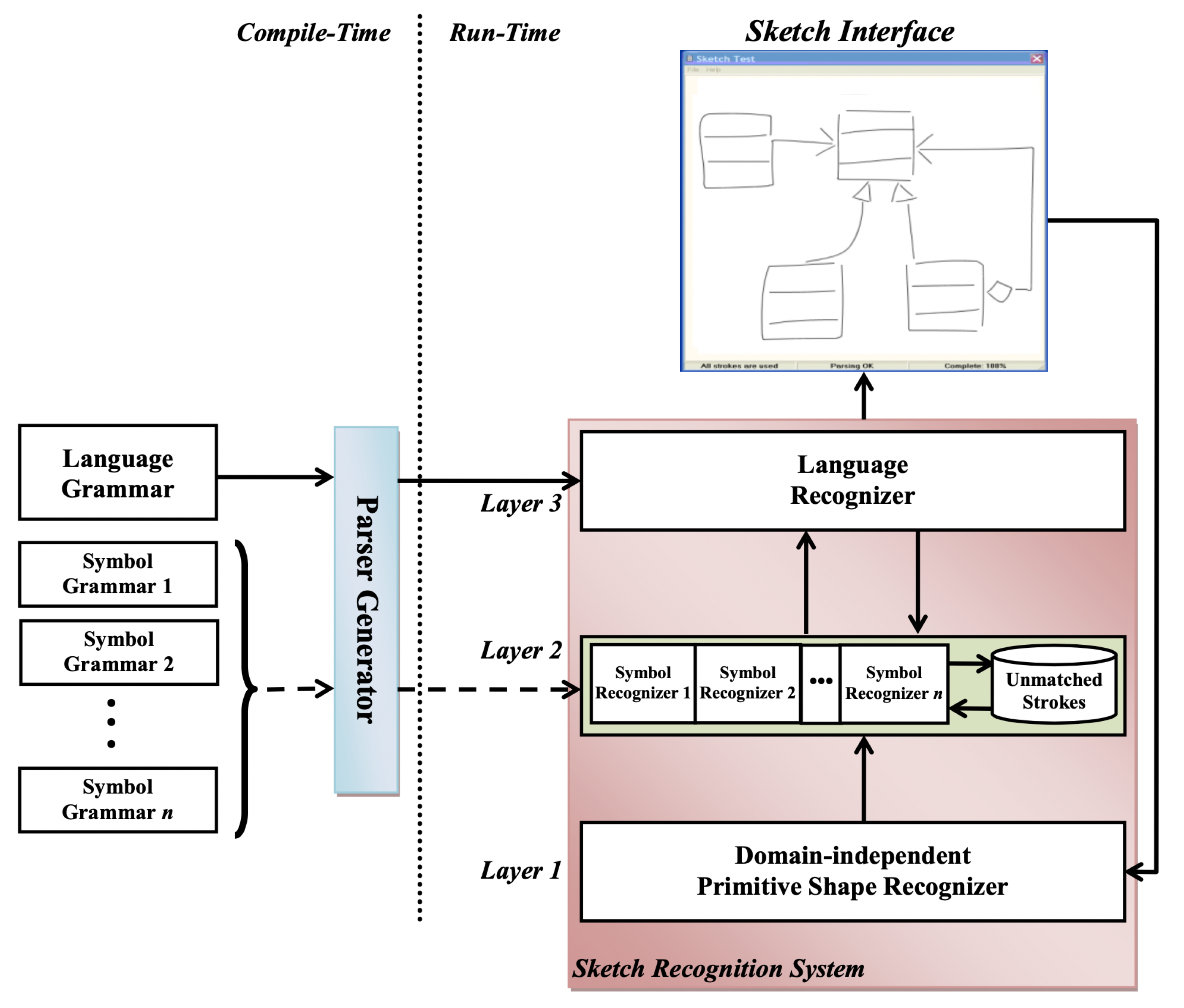

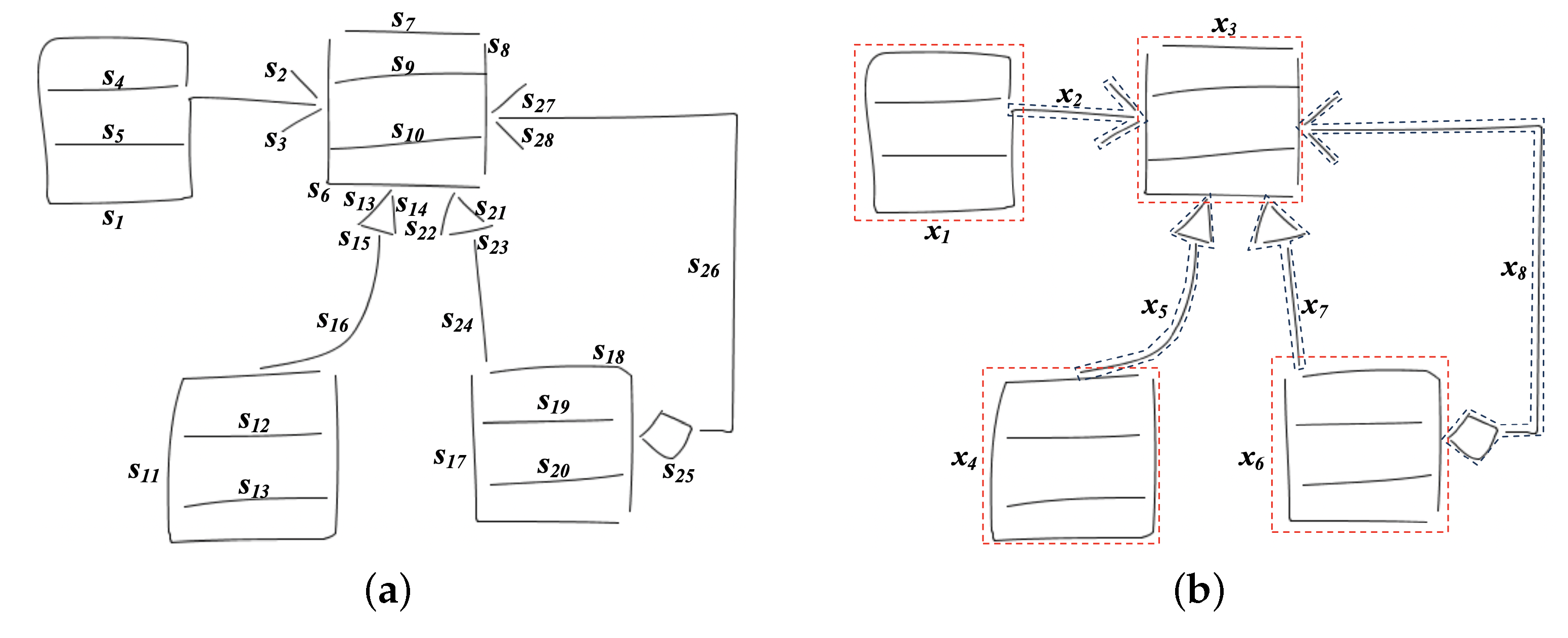



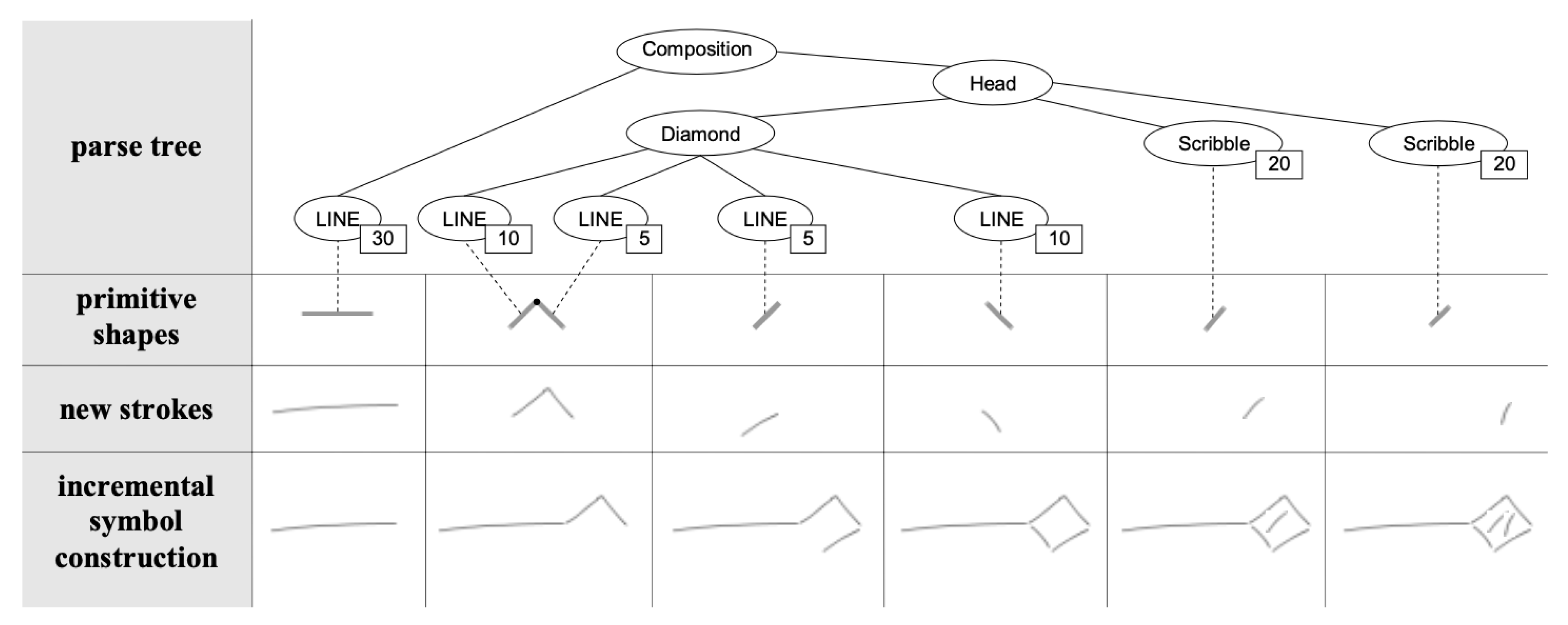
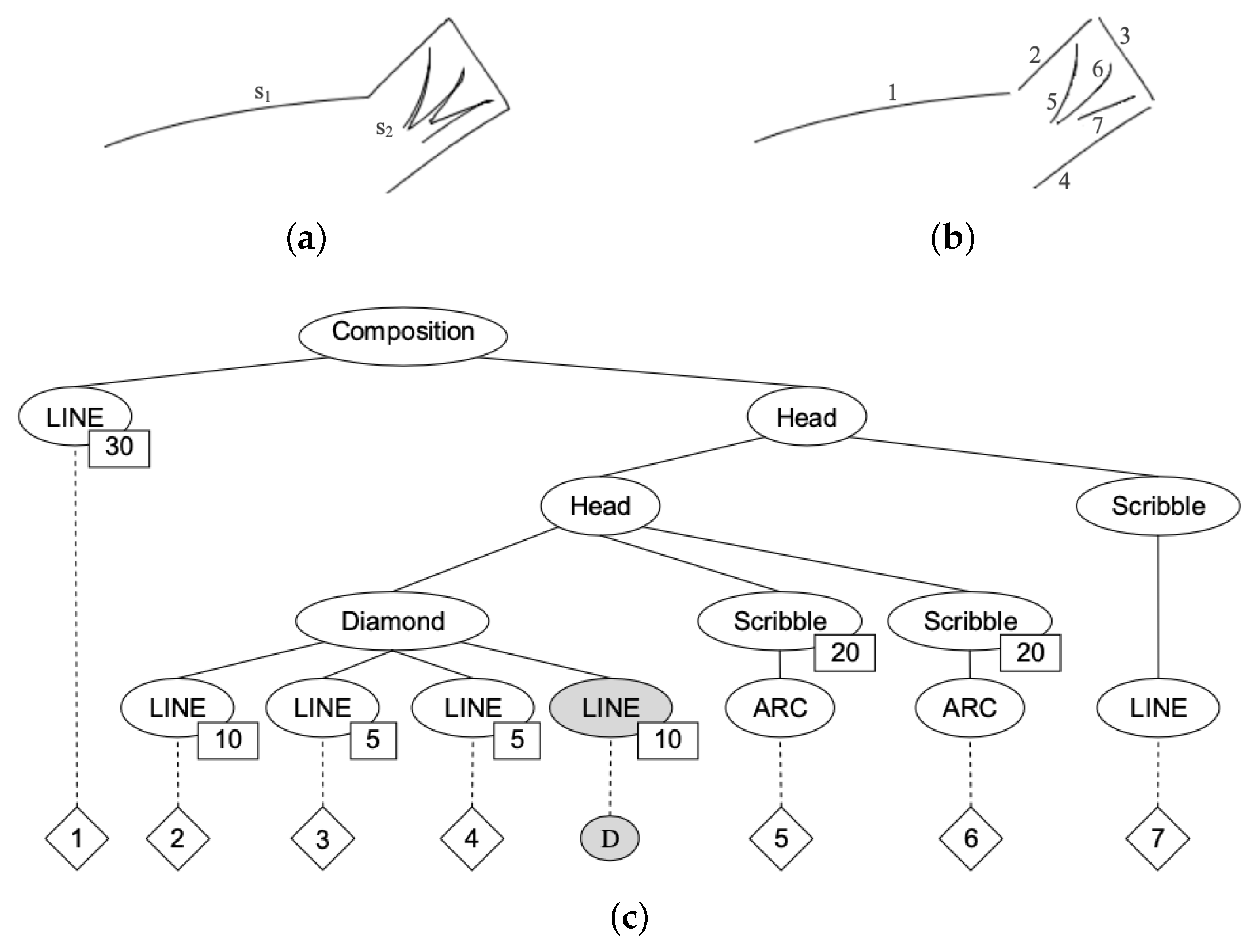
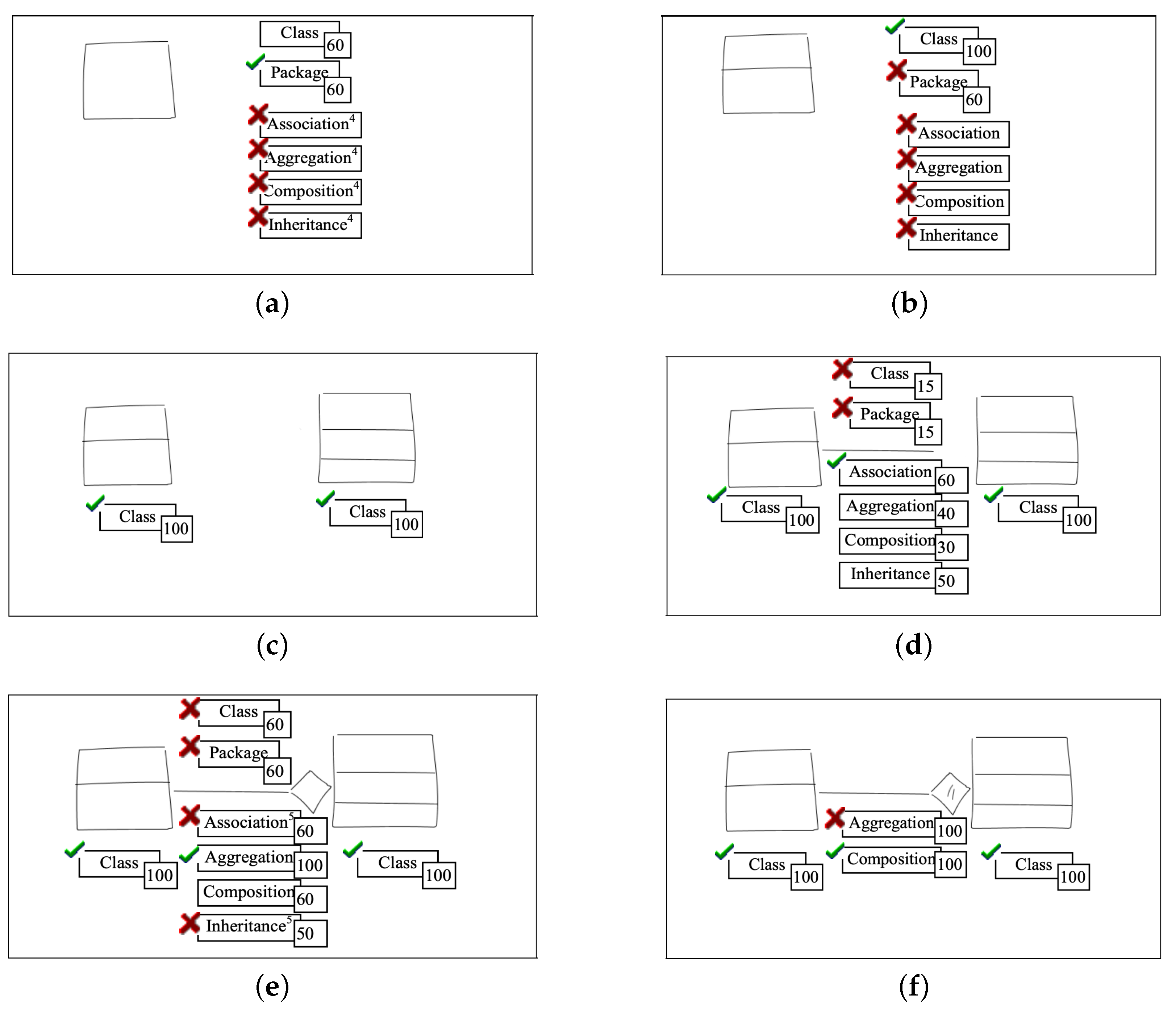

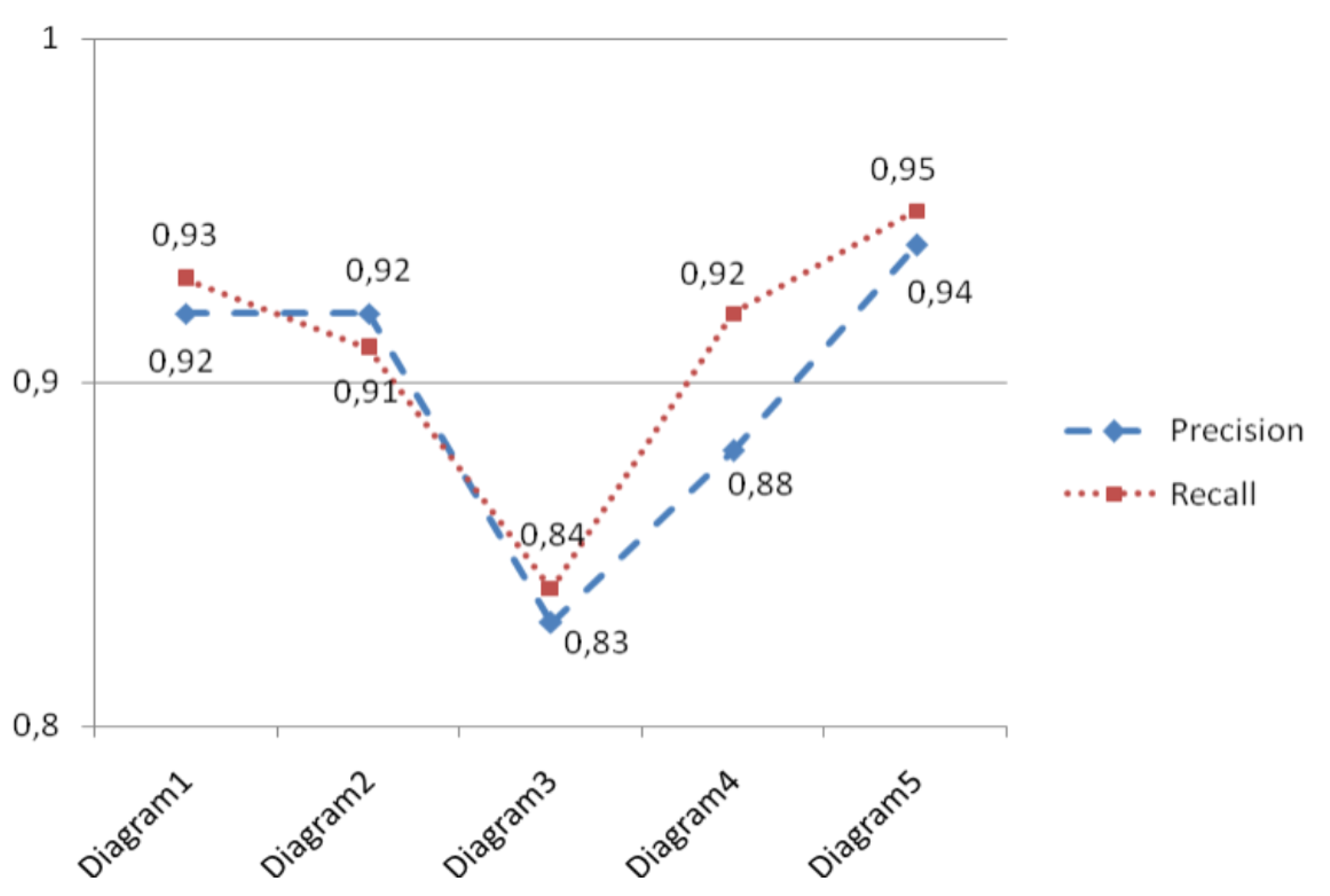
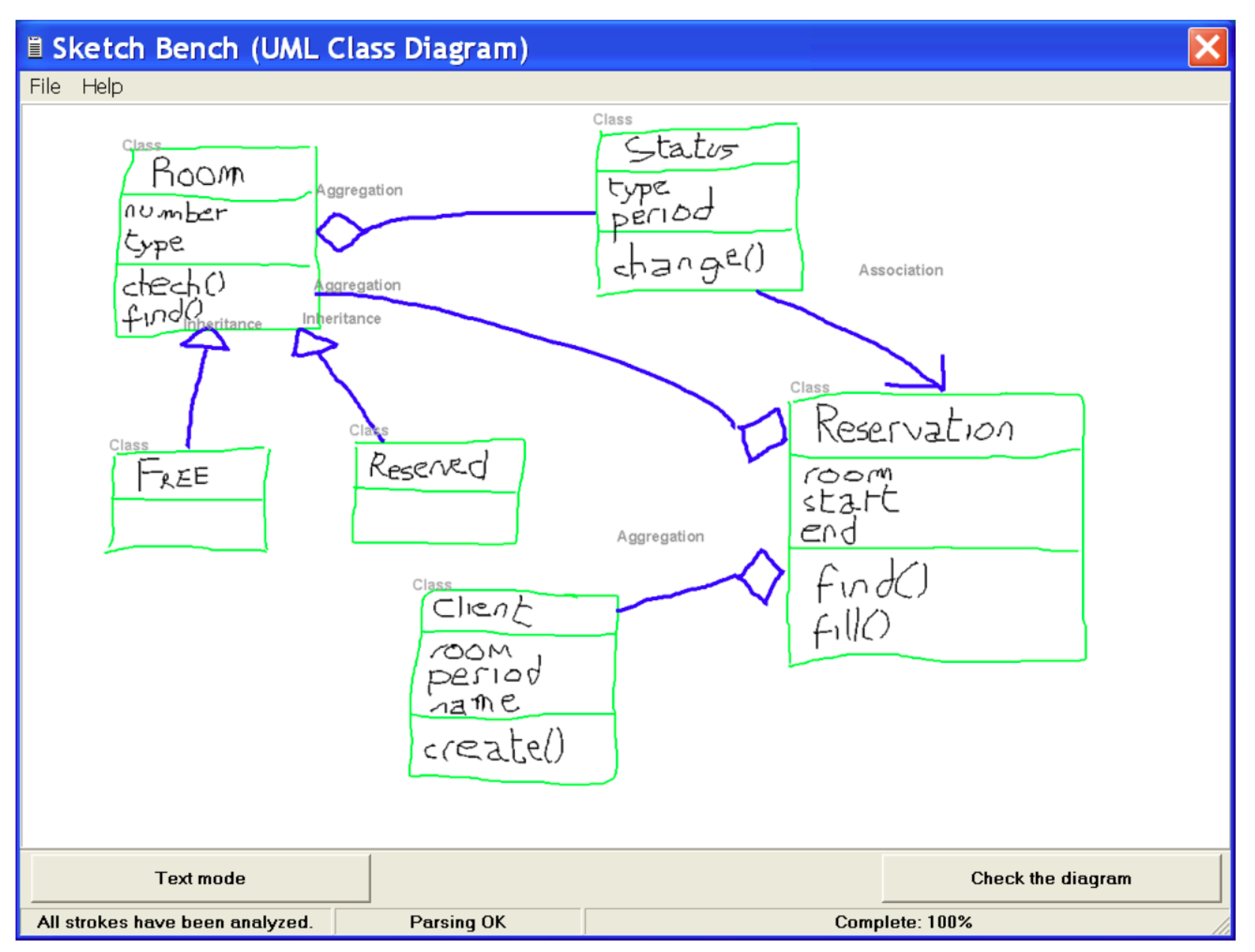
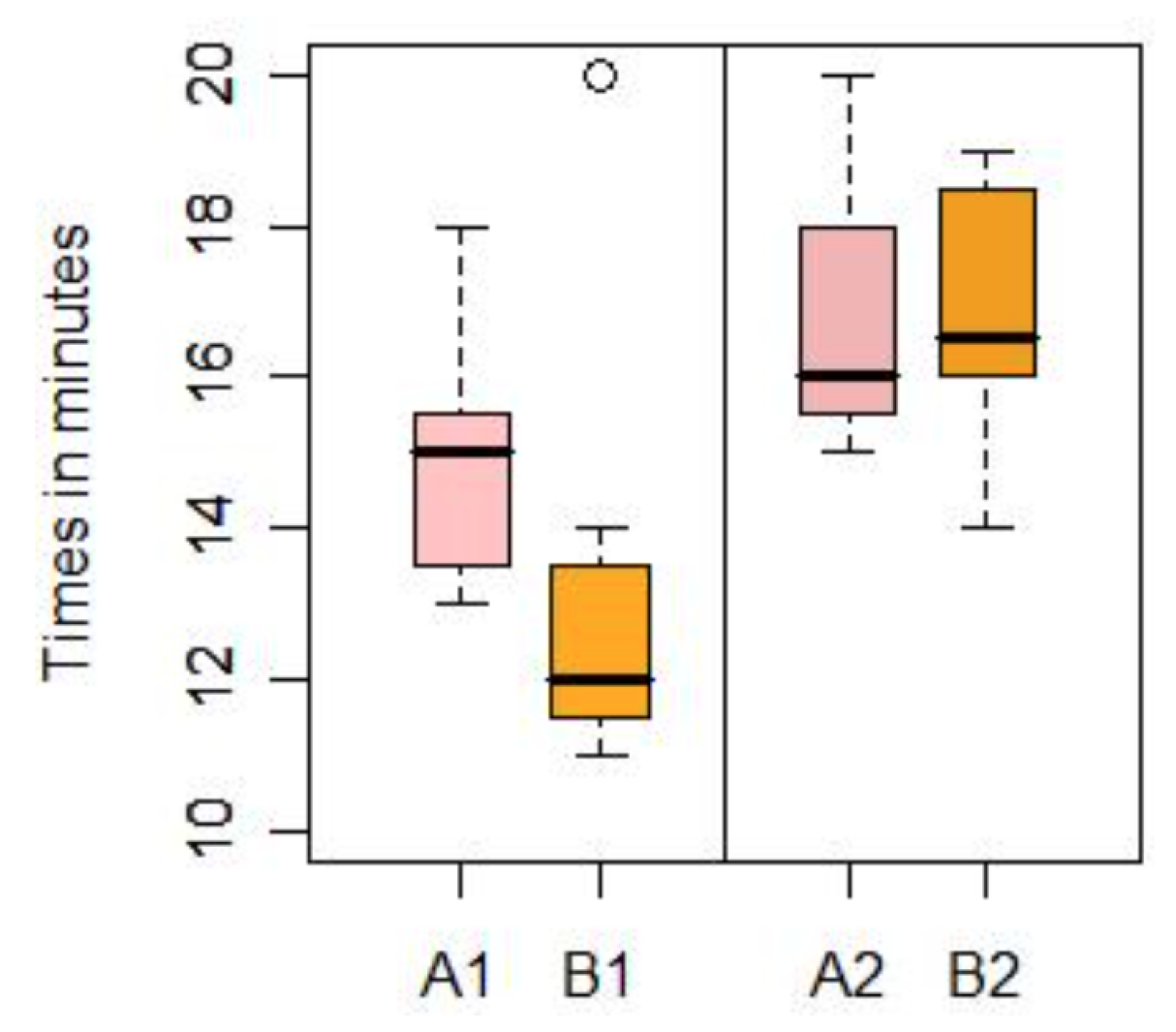


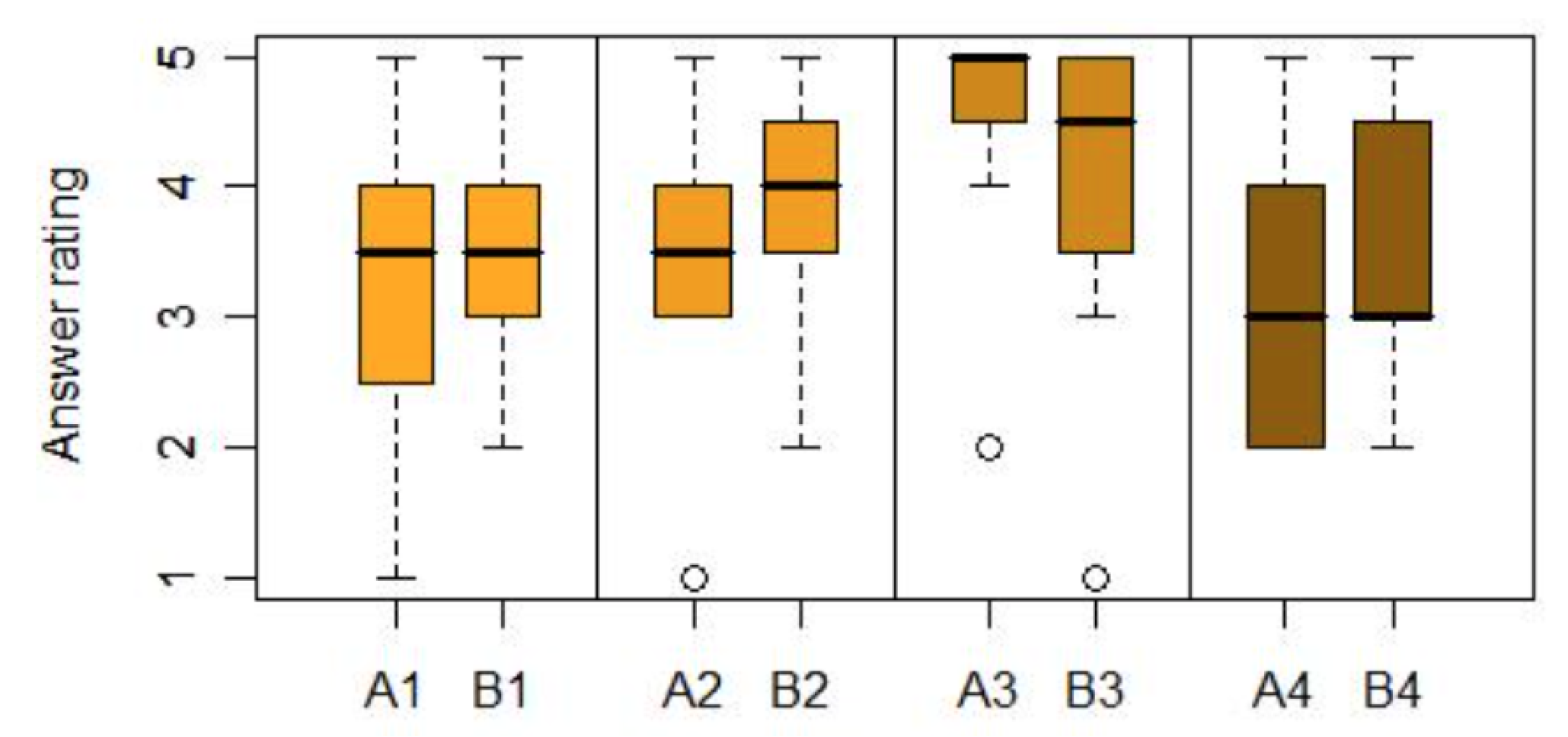
| State | Action | Goto | Next | |||||
|---|---|---|---|---|---|---|---|---|
| LINE | ARC | Composition | Head | Diamond | Scribble | |||
| 0 | :sh1 | :10 | (start, LINE, 30) | |||||
| 1 | :sh2 | :3 | :4 | (joint(), LINE, 10) | ||||
| 2 | :sh5 | (joint(), rotate(90,), LINE, 5) | ||||||
| 3 | 1 | :sh_r5 | :r3 | (contain(), LINE) | ||||
| 2 | :sh_r5 | :r3 | (contain(), ARC) | |||||
| 3 | r1 | (any, ⋆) | ||||||
| 4 | 1 | :sh_r5 | :6 | (contain(), LINE, 20) | ||||
| 2 | :sh_r5 | :6 | (contain(), ARC, 20) | |||||
| 5 | :sh7 | (joint(), rotate(90,), LINE, 5) | ||||||
| 6 | :sh_r6 | :r2 | (contain(), LINE, 20) | |||||
| :sh_r6 | :r2 | (contain(), ARC, 20) | ||||||
| 7 | :sh_r4 | (joint(), rotate(90,), joint(), LINE, 10) | ||||||
| 10 | accept | – | ||||||
| Shapes | Recognized | Recall | ||||||
|---|---|---|---|---|---|---|---|---|
| Class | Package | Association | Aggregation | Composition | Inheritance | |||
| Drawn | Class | 455 | 5 | 22 | 9 | 2 | 1 | 0.95 |
| Package | 0 | 78 | 7 | 1 | 0 | 0 | 0.98 | |
| Association | 0 | 0 | 84 | 9 | 2 | 8 | 0.84 | |
| Aggregation | 3 | 0 | 3 | 51 | 3 | 3 | 0.85 | |
| Composition | 0 | 0 | 2 | 8 | 48 | 2 | 0.80 | |
| Inheritance | 0 | 0 | 12 | 6 | 0 | 142 | 0.89 | |
| Precision | 0.99 | 0.94 | 0.65 | 0.68 | 0.91 | 0.92 | ||
| Size | #Symbols | Precision | Recall | |||
|---|---|---|---|---|---|---|
| BL | ML | BL | ML | |||
| D1 | 25 | 5 | 0.84 | 0.92 | 0.81 | 0.93 |
| D2 | 35 | 6 | 0.79 | 0.92 | 0.77 | 0.91 |
| D3 | 50 | 9 | 0.71 | 0.83 | 0.69 | 0.84 |
| D4 | 60 | 10 | 0.74 | 0.88 | 0.74 | 0.92 |
| D5 | 90 | 17 | 0.84 | 0.94 | 0.83 | 0.95 |
| Average | 52 | 9.4 | 0.79 | 0.90 | 0.77 | 0.89 |
| Total | Precision | Recall | |||
|---|---|---|---|---|---|
| BL | ML | BL | ML | ||
| Class | 480 | 0.98 | 0.99 | 0.83 | 0.95 |
| Package | 80 | 0.72 | 0.94 | 0.78 | 0.98 |
| Association | 100 | 0.44 | 0.65 | 0.75 | 0.84 |
| Aggregation | 60 | 0.52 | 0.68 | 0.70 | 0.85 |
| Composition | 60 | 0.77 | 0.91 | 0.55 | 0.80 |
| Inheritance | 160 | 0.85 | 0.92 | 0.73 | 0.89 |
| (a) | (b) |
|---|---|
| Questionnaire 1 | Questionnaire 2 |
|
|
© 2020 by the authors. Licensee MDPI, Basel, Switzerland. This article is an open access article distributed under the terms and conditions of the Creative Commons Attribution (CC BY) license (http://creativecommons.org/licenses/by/4.0/).
Share and Cite
Deufemia, V.; Risi, M. Multi-Domain Recognition of Hand-Drawn Diagrams Using Hierarchical Parsing. Multimodal Technol. Interact. 2020, 4, 52. https://doi.org/10.3390/mti4030052
Deufemia V, Risi M. Multi-Domain Recognition of Hand-Drawn Diagrams Using Hierarchical Parsing. Multimodal Technologies and Interaction. 2020; 4(3):52. https://doi.org/10.3390/mti4030052
Chicago/Turabian StyleDeufemia, Vincenzo, and Michele Risi. 2020. "Multi-Domain Recognition of Hand-Drawn Diagrams Using Hierarchical Parsing" Multimodal Technologies and Interaction 4, no. 3: 52. https://doi.org/10.3390/mti4030052
APA StyleDeufemia, V., & Risi, M. (2020). Multi-Domain Recognition of Hand-Drawn Diagrams Using Hierarchical Parsing. Multimodal Technologies and Interaction, 4(3), 52. https://doi.org/10.3390/mti4030052





